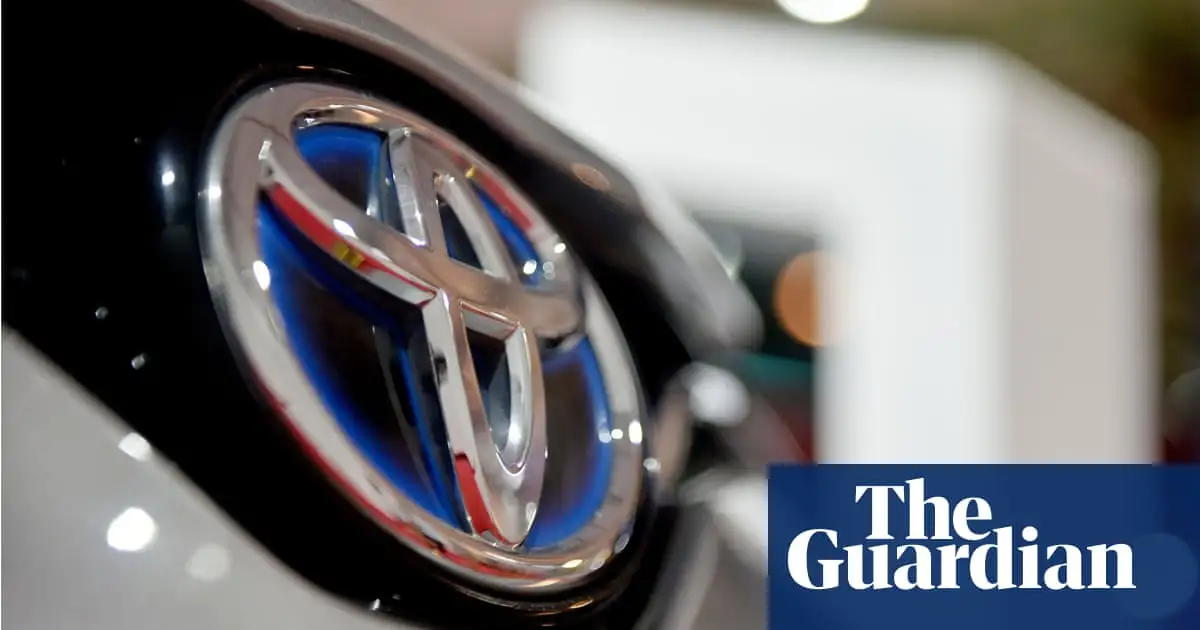- cross-posted to:
- technology@lemmy.ml
- cross-posted to:
- technology@lemmy.ml
Japanese firm believes it could make a solid-state battery with a range of 745 miles that charges in 10 minutes
They have been “claiming”/ “announcing” this breakthrough since 2017 repeatedly. They STILL haven’t figured out how to mass produce it affordably to making it meaningful. They keep pushing out the date for when it will arrive for many years now.

- Release statement claiming breakthrough
- Attract investment money
- Run out of money
- Release statement claiming breakthrough
- Attract investment money
- Run out of money
Repeat until product is complete or no one will invest.
I “”“claim”“” the planet Jupiter
Since Toyota is way ahead with hybrids but behind with EVs, this would be a way to tell the public, “wait, don’t buy a competitor’s EV, because we’ll have something 100x better in a year or so.”
I hope I’m just being cynical, because solid state batteries do sound awesome. I wonder was the weight difference would be
Oh fuck off with that charging times.
Assuming this battery will be 150kwh (which is a conservative estimate for such a range)
Let’s ignore even heat loss So you need to 150kwh in 10 minutes, wish equals to 900kw of immediate charging speed.
Now imagine 20 of those power inputs connecting/disconnecting on a local power management substation.
Not fucking gonna happen.
Even if the power load on the grid was doable, heat dissipation is also a huge problem. Current DC fast chargers max out at 350 kW (in theory, my car supports charging at that rate but the best I’ve seen in real life is around 190kW), and the liquid-cooled cables are already heavy/bulky enough to give some women and older folks a hard time. I can’t imagine a practical way to handle 2 or 3 times the current without making the cables something like 6 inches in diameter and weighing a couple hundred pounds.
I’ve wanted to believe in breakthrough battery technology so many times and been let down. I’ll wait until it hits the market before getting excited. Even this article is pretty vapor-ish:
The world’s second largest carmaker was already pursuing a plan to roll out cars with advanced solid-state batteries, which offer benefits compared with liquid-based batteries, by 2025.
Then a little further down:
The company expects to be able to manufacture solid-state batteries for use in electric vehicles as soon as 2027
I’m waiting for the,“By 2030 we’ll definitely be able to use these batteries in our 2035 models. You’ll see this in 2040 and the sky will open up with sunshine and birds will sing.”
Yeah, chuck in on the pile of “battery innovations” that get announced but never come out. It’s a large pile.
Hydrogen is the future.
Why do you feel hydrogen is the future?
From my understanding, it’s more of a fuel than a storage medium so they kind of play different roles. On top of that, I thought it’s currently pretty difficult to store outside of pretty extreme conditions and the best way to create it at the moment is by burning fossil fuels (natural gas).
I’m not an expert, so let me know if I got any of that wrong!
TL;DR: You’re correct, in my professional opinion.
The catalyst in most hydrogen fuel cells are still too expensive and have a limited life. Hydrogen will mostly be sourced as a waste product from oil and gas extraction (though it could be done with clean electricity and electrolysis), that’s why oil and gas companies are becoming so interested in pushing hydrogen (see the successful “clean” natural gas campaigns, but depending on how you measure it natural gas can result in more emissions than coal and is just a bunch of greenwashing. Same would happen with hydrogen in my opinion). Additionally, we’d have to build out an entire hydrogen delivery infrastructure that serves only that purpose. We’ll just end up with commercial fuel stations like we have now. Fuel cells (for many fuels) can make sense in very remote applications, or industrial applications where specific waste gasses can be turned into supplemental electricity right on site.
Battery-electric on the other hand is much more flexible and fits into our existing infrastructure better. It’s not just power dense batteries for cars; it’s (maybe gravity) batteries for communities, safe and long-lived (maybe salt) batteries for homes, better batteries for our electronics. Research in one area can support improvement of the others. They all connect to the same electricity grid so the energy can be shared among applications. Batteries play a role in decentralizing and democratizing energy (today you can put PV on your house, charge your car or home battery, use your car to power your house in a power outage, etc). As mentioned we can use greener and cleaner batteries (even completely non-chemical) in some applications, and one day we can hopefully get to the point of using ultra- or super-capacitors in place of high-density chemical batteries. In the mean time we have batteries that work and are getting quite affordable, we can transition to this solution now without waiting for a miracle breakthrough, then continue to iterate the technology over time.
The quickest way I’ve found to separate the articles that are going to be meaningless waste-of-time fluff pieces from ones that might be informative is to find the verb in the headline.
Is it something like “claims”, “calls for”, “praises”, “criticizes”, or “expects”? Fluff. If something deserving of a more concrete, direct verb had happened, the headline would have said so. Verbs like “slams” or “attacks” or “demands” are even worse; they’re aggressive and enthusiastic about their content but still can’t make the claim something actually happened or changed.
If the verb is preceded by “could”, “might”, “maybe”, or similar, especially with regard to tech news, it’s also probably an empty slow-news-day article, but those words aren’t necessarily as hollow as the ones mentioned above. Sometimes they’ll contain interesting information about the current state of things, even if they’re just going to lead you on a merry speculation romp about the optimistic/horrifying future.
last year it recalled 2,700 of its first electric vehicles because of concerns the wheels could fall off.
I set up the production line for this hub unit. This news has been really annoying because it meant we had to scramble to install a bolt press machine on this line.
It sounds like you’re implying you wouldn’t have had to install it without this news breaking. Is that the case? I’m curious about this topic if you care to elaborate. What is a bolt press machine? How has this news affected you?
A bolt press is what it sounds like. It presses the studs into the hub unit (idk why we call studs bolts). I think we, as a company, knew about it before the news broke. We had to re-configure the line to add a machine that wasn’t there originally and now we need to changeover between the bolt-type and bolt-less. This changeover is more involved than you might think since some of the components were redesigned for the bolt-type, necessitating some new tooling.
I am hoping it is more of a “they should have seen this coming” kind of thing. In such a way that they should have had ample time before the line was made active to install it.
The important question is what is so wrong with the now countless existing 200/300 mile evs that charge in less than 30 minutes?
300 miles isn’t enough distance for a day of travel and lots of places don’t have charger availability still. What’s wrong with approaching parity in user experience to gasoline vehicles? It will only accelerate their use, and 700 miles in winter is going to be only maybe 300 miles.
A 30 minute charge for every 4 hours of driving is already practical for a long drive. Every safety organisation and fatigue management plan on the planet says you need to stop more often than that for fatigue anyway.
If some is regularly driving more than 200mi/320km in a day (more than the average car drives in a week) without a break on those trips, then a hybrid car is probably a better bet for the foreseeable future.
- cars hold more than 1 person
- mountains mean that four hours is now three hours
- cold weather means that four hours is now two hours
- mountains plus cold weather means four hours is now one and a half hours
- much of the (us) country lacks charging stations to support that, or even the infrastructure to support the charging stations
- hybrid cars are the worst of both worlds
- 300 miles is just barely under the safe distance between most major towns \cities in parts of the us
- that means you barely or don’t get to your location on one charge
- current charging infrastructure means taking a couple hours extra on many trips right now. At least some of this is improving, but very slowly.
This is a very real problem. We know, we have family with an ev who need to travel to us to visit on occasion.
300 miles is just barely under the safe distance between most major towns \cities in parts of the us that means you barely or don’t get to your location on one charge
I’ve never owned a car in my life that gets more than 300 miles on a single tank of gas.
I’ve got the 2021 Kona EV and while you do lose range in the winter, it’s more like 100km/450km. That’s with intense grip heavy winter tires and the heater running. In Ontario, so regularly ran it with -35c temps. It’s cold and you lose some range, but not 400miles out of a 700mile range
In general Li ion batteries lose about 40% charge efficiency in normal cold weather. It’s up to the car’s systems to keep the batteries heated to reduce that, at the cost of constant power draw. In our experience with similar weather it’s not far off, and for safety reasons we just assume half the battery is lost during winter driving. Mountains add into that, but aren’t ultimately super extreme.
Anything that requires long travel distances…
Hmm I thought Toyota was focusing more on Hydrogen powered cars as a long-term strategy rather than EVs.
Yes, in the US they have gone so far as to lobby against EV adoption and run anti-EV commercials in favor of trying to get people to buy their hybrids. They innovated earlier with the Prius but then stagnated and are behind now and instead of trying to catch up, they spent time and money trying to block competition. Really made me dislike the company despite the stellar reputation of the quality of their vehicles.
Especially since hydrogen as a fuel is a dead-end, so far as I can tell. In addition to the net energy loss that come from separating hydrogen from whatever else it’s attached to in the precursor material (please tell me they’re not using water for this…), who is going to want to drive a 2025 Toyota Hindenburg?







